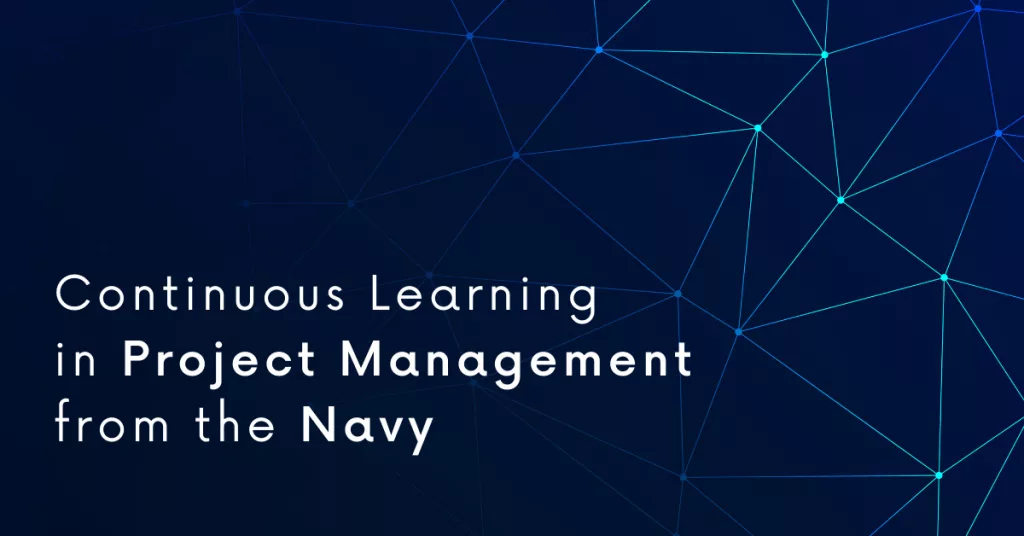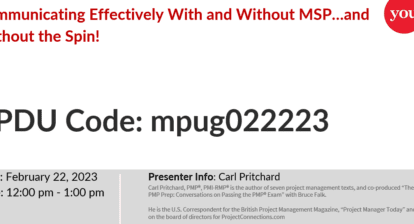
Project management has many practical applications across various fields. It’s enlightening to explore the similarities and differences in project management fundamentals and advanced techniques, as they’re applied in different industries. Today we’ll discover how project management looks in the Navy, and what it can teach us about being effective in any project management role.
The Navy’s Project Managers
A Chief Warrant Officer is the Navy’s version of a senior leadership position involved in project management, naval training, and advancement of personnel. To best understand a Chief Warrant Officer’s perspective on project management, we must first discuss what the role entails. Let us start by briefly defining the position of Chief Warrant Officer (CWO).
A CWO is a previously enlisted senior Sailor. To be more specific, one must have become a Chief Petty Officer (CPO) before even being able to apply for the position of CWO. Moreover, a CPO is an enlisted, working part of the Navy, an individual that has become the equal to a second level civilian supervisor. This means that they do not actually do the work anymore, but they coordinate both the work and personnel in the execution of said work. The purpose of a CWO is that they are the technical experts, there to guide other personnel in the execution of their work. Whilst the position is centered on technical expertise, obtaining the position of CWO requires a good understanding of personnel interactions at numerous levels.
How Naval Projects are Different from Civilian Projects
Naval projects are different from other projects; cost is not a primary concern. While it does play some part, it is not a primary driver for the Navy, in the way that it is for the civilian sector. The primary drivers for the Navy’s projects are safety, schedule, and standards. As I am sure most people can understand, a high standard of work is necessary for any vessel that is going into harm’s way. People’s lives are – or could be – directly affected by the quality of the work accomplished. There are numerous divisions and departments on ships, each having their own projects and being part of others’ projects. The very nature of all these co-dependencies removes some of the barriers that civilian organizations suffer from.
Specialized Training and Its Effect on Communication Barriers
One more important point to address before we get started with discussing project management is the Navy’s training of its personnel. System interrelations are taught in just about every aspect of naval training. The basic cause and affect theories taught at the beginning of one’s naval career are further expounded upon through job-specific training and ship qualifications. Ship qualifications are rigorous, culminating in a practical examination in which the individual gains and proves their understanding of all systems associated with that specific vessel. Besides teaching the individual about the vessel, this qualification helps the individual interact with the group in a manner that develops trust and understanding. When an individual gains their ship’s qualification, it is tantamount to the rest of the ship’s company saying, “I trust you with my life.” This in most cases removes many of the basic communication roadblocks.
Importance of Project Management Skills in Advancement of Personnel
The last item we shall discuss is advancement of personnel. Senior personnel in the Navy, both officers and enlisted, know that their junior personnel are going to take their position one day. It is to that end that every project is used as an opportunity to learn and teach personnel. This happens for two reasons, both of which are somewhat self-serving. As a senior person moves up, they do not want to have someone with poor project management skills running their projects. This would only cause a greater strain on the individual leading the project. Additionally, an individual cannot move up if there is no one to take his or her current position. They might move up in rank but retain the same job if this occurs. While junior officers are the closest to external hires as the Navy gets, these individuals are mentored by both senior officers and enlisted personnel to become senior leaders.
Lessons in Project Management from a CWO
Now that we have discussed some basic differences between civilian projects and naval projects, we can discuss some lessons in project management from a Chief Warrant Officer.
Making Any Activity a Learning Opportunity
In the book, Continuous and Embedded Learning for Organizations, we discuss the potential for every project to be a learning opportunity. The key to making any activity a learning opportunity is placing review and check points within the plan. These points must be treated as key components of the activity and/or project. While most organizations have review points, or what they might call “Key Events” (KE) or “Milestones” (MS), they treat these points as markers of success via learning or review points. KE’s and MS’s are comprised of smaller parts of a project or activity that are tied together both technically and through scheduling. Some organizations will break these ties to facilitate calling these KE’s/MS’s, thus giving a false indication of the project’s progress. If items are to be untied from a KE or MS, we must understand if it was tied incorrectly the first time and why we are moving it.

Maintaining Focus on Developing Personnel
The hardest part of any project is maintaining a dual focus. While the primary goal of any project manager is to complete the project on time and properly, they must not sacrifice the development of their personnel while achieving this goal. However, this is most commonly the first thing to be removed from any project. For this reason, I have come to realize that these developmental opportunities must be embedded within the project’s plan.
Ancillary or secondary application of developmental and/or training plans is tantamount to cutting them out before you even start the project. Every opportunity to learn is an opportunity for self and group improvement. If you have ever experienced an increase in your own knowledge while preparing to teach a subject, you are familiar with this concept.
A Learning Focus Keeps Us Growing
As we become senior personnel, we tend to develop biases about how to manage our projects and people. When we embed learning within our projects, we invite the perspectives of our people that have not yet been jaded and biased. This keeps our own perspectives developing as well. I have found that the statement, “That’s how we have always done something,” stifles both learning and personnel development. This approach is difficult in the Navy, as with many organizations that desire repeatability. Repeatability is commonly seen as the need for doing an activity the exact same way as before, which can be tempting. However, it does not actually yield the same results, as compliancy becomes a factor in the activity. It has been said that “…compliancy yields inattention and inattention yields errors.” From what I have learned about people and projects, this statement is very true.
Conclusion
In our discussion we have covered the basic development of a Chief Warrant Officer, the perspective from which the Navy looks at projects and project management, and last but not least, my view of the necessity for embedding learning in our projects. In the next few discussions, we will look into the role of organizational learning in projects, and how that plays into organizational development strategies. While we are having these discussions, we should keep in mind that their interrelationships make them part of same activity: Power Skills.
Read more from Value Transformation
Transformation Corner: The Intersection of Product and Project Managers





